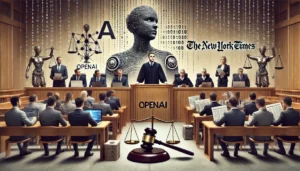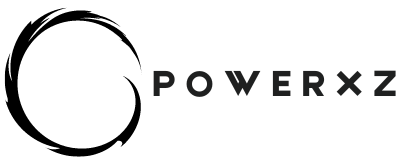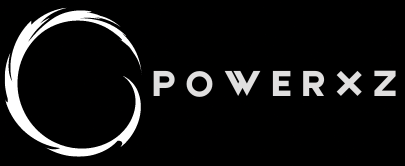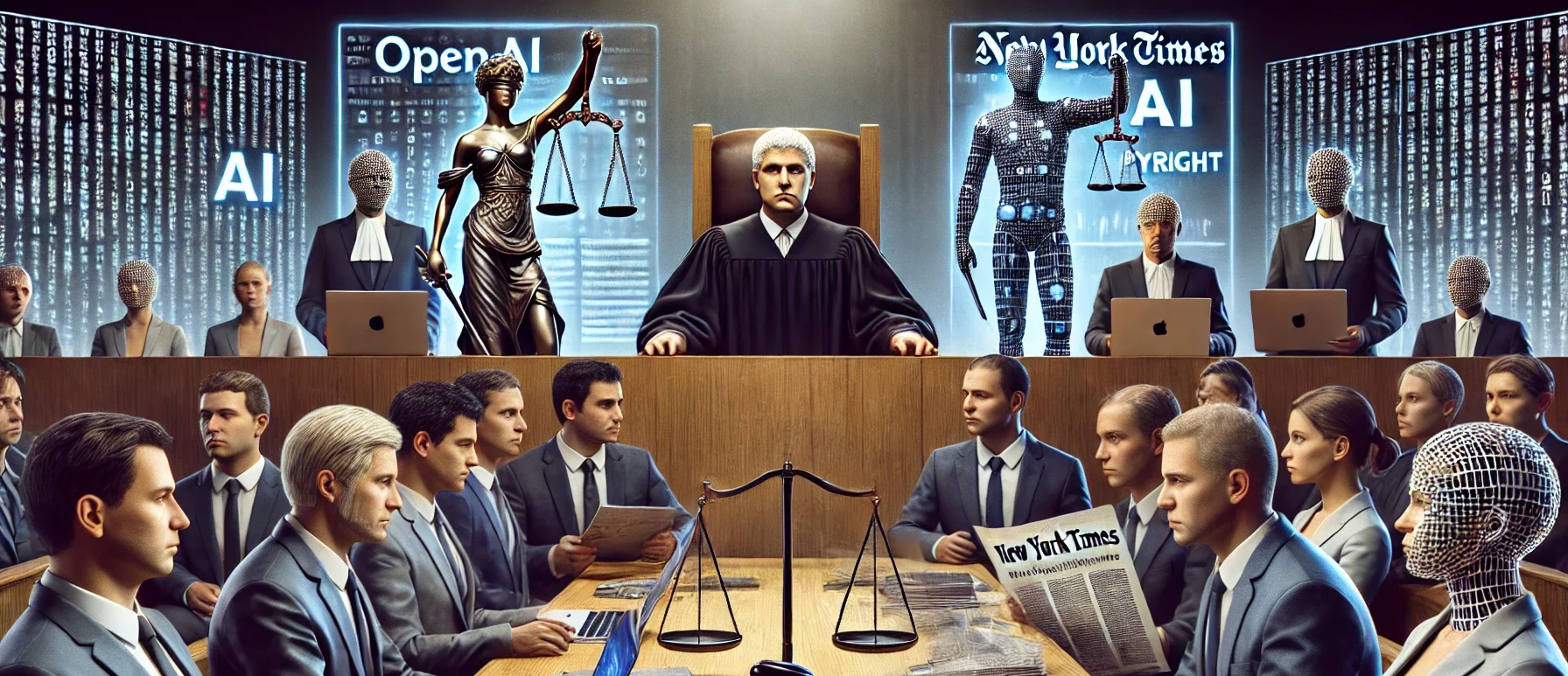The beginning of 2024 has brought with it a landmark legal battle between OpenAI, one of the leading organizations in artificial intelligence, and The New York Times, a stalwart in journalism. This lawsuit centers on allegations of copyright infringement, highlighting the growing tensions between content creators and AI developers. The case raises critical questions about the intersection of AI, intellectual property, and the future of digital content.
The Crux of the Lawsuit
The New York Times has accused OpenAI of using its content without permission to train and develop its AI models, including the highly popular GPT-3 and GPT-4. According to the lawsuit, OpenAI’s models have scraped and incorporated a vast array of articles, data, and other content from The New York Times, which the newspaper claims is a violation of its intellectual property rights.
The lawsuit was filed after months of negotiations between the two entities failed to reach a satisfactory agreement. The New York Times seeks substantial damages and an injunction to prevent OpenAI from using its content in the future. OpenAI, on the other hand, contends that its use of the content falls under fair use, a defense that allows limited use of copyrighted material without permission from the rights holders under certain conditions.
Legal and Ethical Implications
This case is significant as it touches on the broader issue of how AI companies gather and utilize data to train their models. AI systems, especially those developed by OpenAI, rely on vast amounts of text and data to function effectively. This data is often collected from publicly available sources on the internet, including news articles, blogs, and social media posts. However, the legality of using such data without explicit permission is a gray area, leading to disputes like the one between OpenAI and The New York Times.
The outcome of this lawsuit could set a precedent for how AI models are trained and how intellectual property laws are applied in the digital age. If The New York Times succeeds, it might lead to stricter regulations and requirements for AI developers to obtain permissions before using copyrighted material, potentially slowing down the development of AI technologies.
Fair Use Defense
OpenAI’s primary defense hinges on the concept of fair use, which allows for the use of copyrighted material without permission under certain circumstances, such as for commentary, criticism, news reporting, teaching, scholarship, or research. The organization argues that its use of The New York Times’ content is transformative and does not compete with the newspaper’s primary market.
Fair use is a complex legal doctrine that balances the rights of copyright holders with the public’s interest in the dissemination of information. Courts typically consider four factors when determining fair use:
- Purpose and Character of the Use: Whether the use is of a commercial nature or for nonprofit educational purposes. Transformative uses that add new meaning or purpose to the original work are more likely to be considered fair use.
- Nature of the Copyrighted Work: The use of factual works is more likely to be considered fair use than the use of highly creative works.
- Amount and Substantiality of the Portion Used: Using smaller, less significant portions of the work is more likely to be considered fair use.
- Effect of the Use on the Potential Market: If the use adversely affects the market for the original work, it is less likely to be considered fair use.
OpenAI contends that its AI models create new, transformative outputs based on the data they ingest, thus meeting the criteria for fair use. However, The New York Times argues that the extensive and systematic use of its content exceeds what is permissible under fair use and directly impacts its ability to monetize its articles.

The Broader Context
This lawsuit is not occurring in isolation. The rapid advancement of AI technologies has led to similar disputes globally. Content creators, ranging from news organizations to individual artists, are increasingly concerned about how their work is being used to train AI systems. These concerns are leading to calls for more robust regulations and clearer guidelines on the use of copyrighted material in AI training.
In response to these challenges, some AI companies are exploring alternative approaches to data collection and usage. For instance, they are investing in synthetic data generation, where data is artificially created rather than sourced from real-world content. This method could mitigate some of the legal risks associated with using copyrighted material, but it also comes with its own set of technical challenges.
Potential Outcomes and Implications
The resolution of the OpenAI vs. The New York Times lawsuit could have far-reaching implications for the AI industry and beyond. If the court rules in favor of The New York Times, AI developers might need to rethink their data collection strategies and potentially pay for the use of copyrighted content. This could increase the cost and complexity of developing AI models, particularly for smaller companies and startups.
Conversely, a ruling in favor of OpenAI could reinforce the fair use defense and provide greater latitude for AI developers to use publicly available data. However, it might also prompt content creators to push for legislative changes to protect their intellectual property more robustly.
Conclusion
The OpenAI vs. The New York Times lawsuit is a pivotal moment in the ongoing conversation about AI, intellectual property, and the ethical use of data. As AI technologies continue to evolve and permeate various aspects of society, establishing clear and fair guidelines for data use will be crucial. The outcome of this case will likely influence not only the future of AI development but also the broader landscape of digital content and intellectual property rights.
Stakeholders across the technology and media sectors will be watching closely, as the decisions made in this case could shape the rules of engagement for AI and content creators for years to come. Whether it leads to tighter regulations or reinforces existing fair use doctrines, the implications will be profound, setting the stage for the next chapter in the integration of AI into our digital world.






